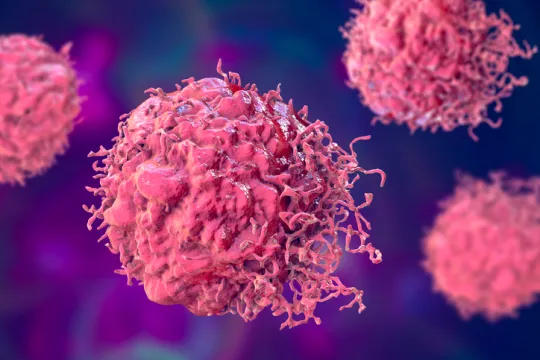
Scientists have achieved a monumental breakthrough with the development of a revolutionary “miracle molecule” that could represent the holy grail of cancer treatment. This innovative compound demonstrates the remarkable ability to eliminate solid cancerous tumors while preserving surrounding healthy cells.
Researchers at City of Hope, a leading U.S. cancer research and treatment center, have made this groundbreaking discovery by targeting the previously thought “undruggable” proliferating cell nuclear antigen (PCNA) protein.
The mutated form of PCNA plays a critical role in tumor growth by facilitating DNA replication and repair in cancer cells. The research team developed a specialized molecule called AOH1996 that precisely identifies and neutralizes this mutated protein.
Early research indicates AOH1996 may effectively destroy all solid tumor types while maintaining complete selectivity – leaving normal cells unharmed. This development could herald a new era in cancer therapeutics.

The research team continues intensive investigation into the molecular mechanisms of this potential game-changing treatment through animal studies. Concurrently, Phase 1 human clinical trials are progressing, generating significant anticipation in the medical community.
A key question remains whether the final approved treatment will maintain its current oral formulation.
This scientific achievement represents twenty years of dedicated research. The therapy’s name honors Anna Olivia Healey (AOH), born in 1996, whose life was claimed by cancer. Her legacy now inspires hope for countless others facing similar battles.

“Traditional targeted therapies focus on single pathways, allowing cancer cells to develop resistance through mutation,” explained Dr. Linda Malkas, the study’s lead investigator and professor at City of Hope.
“PCNA resembles a major transportation hub with multiple gates. We discovered cancer-specific PCNA modifications that enabled development of a drug targeting only malignant cells.
“Our treatment acts like a snowstorm shutting down a key airport – disrupting only cancer-related activities while normal operations continue unaffected.”
Published in Cell Chemical Biology, the study demonstrates AOH1996’s efficacy against numerous cancer types in preclinical models, including breast, prostate, brain, ovarian, cervical, skin, and lung cancers.
“Results have been extremely promising,” noted Dr. Malkas. “AOH1996 effectively suppresses tumor growth both alone and in combination with other therapies in cellular and animal models, with no observed toxicity.
“Human trials are currently underway at City of Hope to evaluate this experimental chemotherapy.”
The team has evaluated AOH1996 across more than 70 cancer cell lines and normal control cells. The molecule uniquely disrupts cancer cell reproduction while sparing healthy cells.
Additional findings show AOH1996 prevents replication of damaged DNA in cancer cells, triggering programmed cell death (apoptosis) while protecting healthy stem cells.

“PCNA was previously considered untargetable, but City of Hope has successfully developed a therapeutic approach against this challenging protein,” said co-author Dr. Long Gu.
“Our discovery that PCNA contributes to replication errors in cancer cells opens new avenues for developing more precise, personalized cancer treatments.”
Notably, the experimental treatment appears to sensitize cancer cells to DNA-damaging agents, suggesting potential for combination therapies and innovative treatment regimens.
Co-author Professor Daniel Von Hoff added: “City of Hope combines world-class cancer research with the infrastructure to rapidly translate laboratory discoveries into clinical applications for patients in critical need.”
The ongoing Phase 1 trial, initiated in October, will provide crucial insights into the treatment’s mechanism of action and guide future clinical development of this promising cancer therapy.







